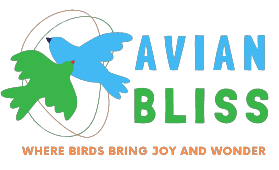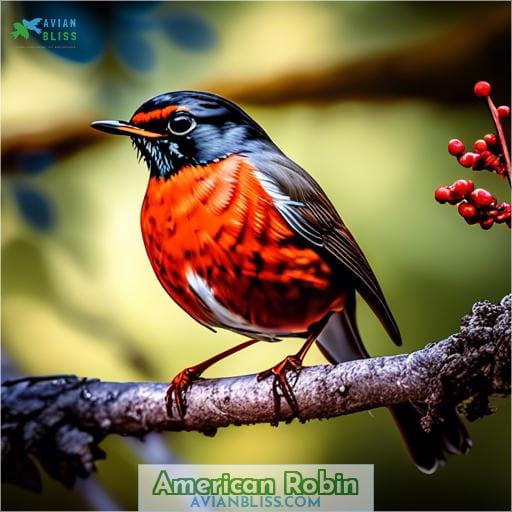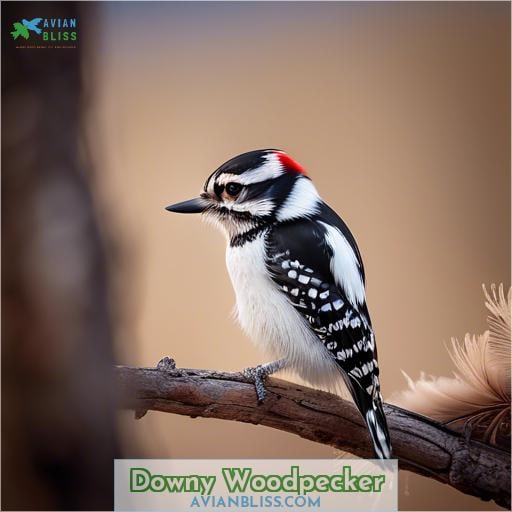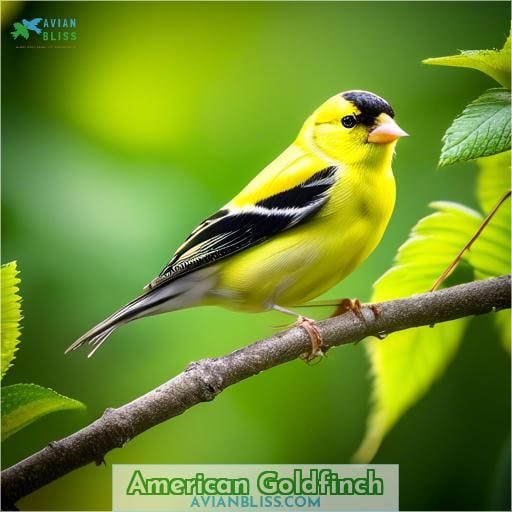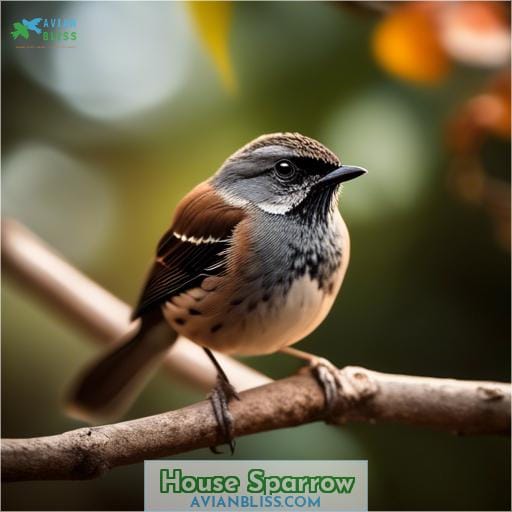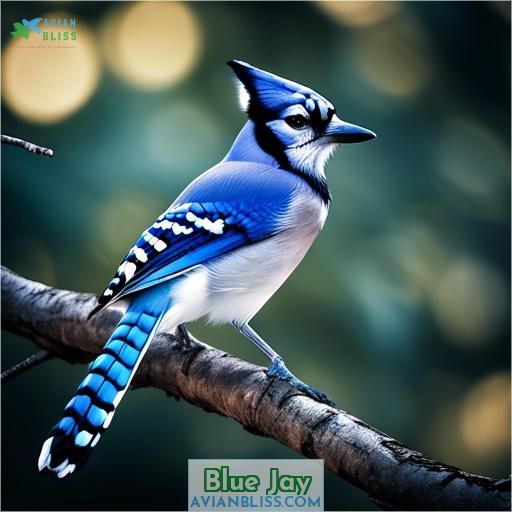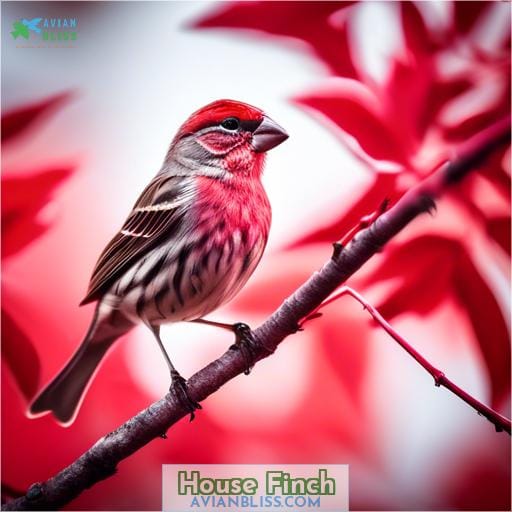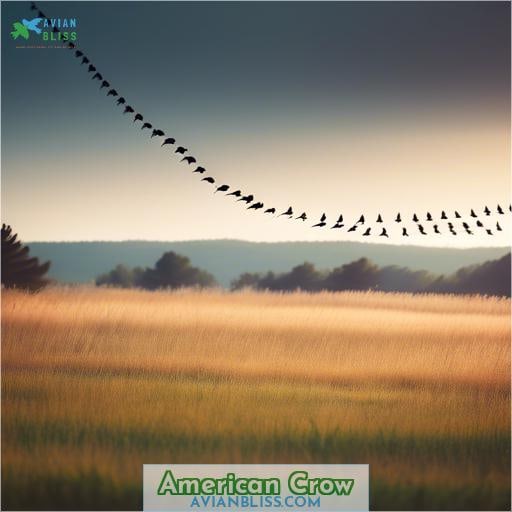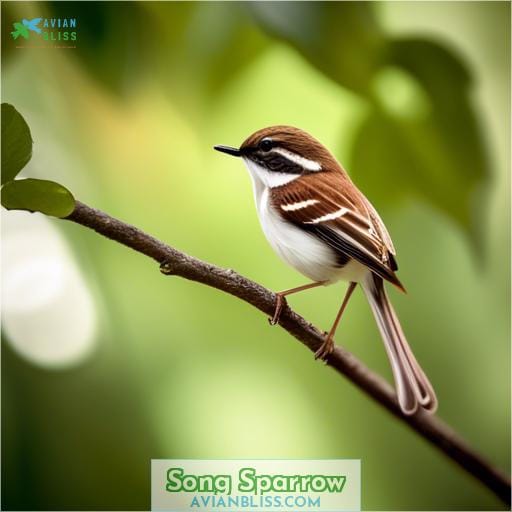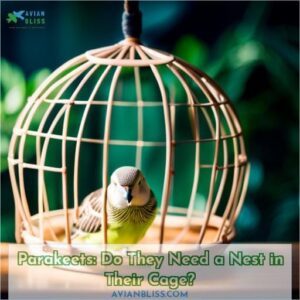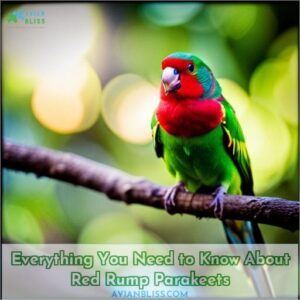This site is supported by our readers. We may earn a commission, at no cost to you, if you purchase through links.
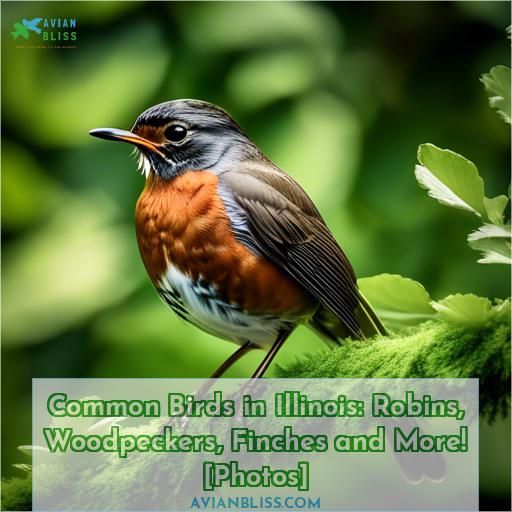
Perched on branches, flitting through backyards, Illinois hosts a remarkable array of common birds.
From the cheerful melodies of robins to woodpeckers’ staccato drumming, this state’s avian residents captivate nature enthusiasts.
Explore the vibrant hues of goldfinches, the regal presence of cardinals, and the acrobatic antics of jays.
Immerse yourself in this photographic journey celebrating the feathered wonders that grace Illinois’ neighborhoods and parks.
Table Of Contents
- Key Takeaways
- American Robin
- Downy Woodpecker
- Hairy Woodpecker
- American Goldfinch
- House Sparrow
- Northern Cardinal
- Blue Jay
- House Finch
- American Crow
- Song Sparrow
- Frequently Asked Questions (FAQs)
- What is the difference in size between the Downy Woodpecker and Hairy Woodpecker?
- How do the diets of the Northern Cardinal and American Goldfinch differ?
- What are the common habitats for the Blue Jay and House Finch?
- What are the specific nesting behaviors of the American Robin and Downy Woodpecker?
- How do the physical characteristics of the American Crow and Black-capped Chickadee compare?
- Conclusion
Key Takeaways
- The American Robin is a common sight in Illinois, with a range that extends from Alaska to Mexico and Guatemala.
- American Robins are adaptable birds that can nest in a variety of habitats, from trees and shrubs to the ground, depending on the season and their life cycle.
- The Downy Woodpecker is a small bird with a white belly and black back, often seen drumming on trees, posts, and other objects.
- The Northern Cardinal, Illinois’s state bird, is a vibrant red bird with a distinctive crest, known for its melodic whistles and chirps.
American Robin
The American Robin, well-known for its rusty red breast, is a common sight in Illinois. Its dark head and back, along with its white throat and eye patches, make it easily recognizable in forests and tundra.
Range Map
The American Robin, a common backyard bird, has a range that extends from Alaska in the north to the highlands of Mexico and Guatemala in the south.
In the United States, robins can be found throughout most of the country all year round, with higher densities in the southern parts of their range during winter.
The species is known for its adaptability, thriving in a variety of habitats, including forests, tundra, and even urban areas.
In Illinois, the American Robin is a common migrant and summer resident statewide, with some birds overwintering in the state.
The species has shown a northward expansion of its wintering range in recent decades, which is facilitated by the availability of new sources of winter food, such as invasive shrubs like buckthorn and bush honeysuckle.
Physical Characteristics
Physical Characteristics of the American Robin
- Size: The American Robin is about 10 inches long (25 cm) and weighs around 2.7 ounces (77 grams).
- Wingspan: Its wingspan ranges from 12.2 to 15.75 inches (31 to 40 cm).
- Coloration: The bird has a brick-red chest, gray back, and white chin with small white spots around the eyes and (usually) on the tail corners.
- Migratory Patterns: While most populations of robins are migratory, some live in a relatively small range, such as along the Pacific coast.
- Habitat: Robins are well adapted to living in human-dominated landscapes, such as suburban lawns, gardens, and farmland, but during breeding season, they use a wide variety of forest, woodland, and other habitats.
Additional Physical Characteristics
- Diet: The American Robin primarily eats ground invertebrates, such as earthworms, insects, and fruit.
- Nesting Habits: Female robins choose the nest sites, typically on one or several horizontal branches hidden in or just below a layer of dense leaves. Nests are typically in the lower half of a tree, although they can be built as high as the treetop.
- Population Trends: According to the North American Breeding Bird Survey, American robin populations are steady or increasing over most of their range, but populations in the Willamette valley have been slowly decreasing.
Conservation Concerns
Robins can come in contact with pesticides used to control insects in lawns, gardens, and farmland, which can lead to sickness and death. Additionally, deforestation, urbanization, and agricultural intensification can be major problems for many species, including the American Robin.
Habitat
As a resident of Illinois, you’re likely familiar with the American Robin‘s presence in your backyard. These birds are known for their rusty red breasts, dark heads, and white throat and eye patches. But did you know that their habitat preferences can vary depending on the season and their life cycle?
During the breeding season, which lasts from April to July, American Robins typically nest in trees, shrubs, and human-made structures. The nest is a mud cup with plant and other materials added, and the female carries mud in her bill to make the nest. However, in the early breeding season, you might find American Robins nesting on the ground. This behavior isn’t necessarily an adaptive response to local environmental conditions, but could be due to immigration of robins with a preference for ground nesting, or the breeding adult age or inexperience of the birds.
In the winter months, American Robins are known to roost in trees and shrubs, as they aren’t as visible to humans during this time. However, some robins may overwinter in Illinois, especially in urban areas.
It’s important to note that habitat availability, preservation, fragmentation, and degradation can all impact the American Robin’s population and behavior. For example, ground nesting at our site may not be an adaptive response to local environmental conditions, but could be due to immigration of robins with preference for ground nesting due to previous experience, breeding adult age or inexperience.
In conclusion, American Robins are adaptable birds that can nest in a variety of habitats, from trees and shrubs to the ground, depending on the season and their life cycle. As a resident of Illinois, you can help support these birds by providing suitable nesting sites and avoiding the use of pesticides, which can harm their food sources.
Downy Woodpecker
Downy Woodpeckers are small, charming birds that are common in backyards and gardens. Measuring about 6-7 inches long, they’re the smallest of our woodpeckers, making them easy to spot. Their white belly and black back, with white streaks, make them easily identifiable. Males have a red spot on the back of their head. These birds are often seen drumming on trees, posts, and other objects, which is a loud, continuous, rapid pecking, on resonant surfaces such as dead tree stubs.
Downy Woodpeckers are versatile birds, found in a variety of habitats, including open woodlands, orchards, parks, and backyards. They feed on insects, particularly wood-boring larvae, caterpillars, and ants. During the breeding season, they’ll drum on trees and other objects to announce their territory and attract a mate.
These birds aren’t only fascinating to observe in the wild but also in your backyard. By providing the right food and habitat, you can attract Downy Woodpeckers and enjoy watching their courtship displays, nesting habits, and parenting behaviors.
Hairy Woodpecker
The Hairy Woodpecker is a medium-sized bird with a long, straight bill and long tail feathers.
Its back is black with a white stripe down the middle, and its wings are black with white bars. The head is black with white stripes, and adult males have a red patch at the back of the head.
Hairy Woodpeckers are similar in appearance to Downy Woodpeckers, but they’re larger and have much longer bills.
They’re found in forests and on forest edges, requiring large trees in their habitats to serve as nesting locations and in which they forage for food.
American Goldfinch
Transitioning from the striking Hairy Woodpecker, let’s flutter into the world of the American Goldfinch, a common sight in Illinois and a beacon of brightness in your backyard.
- Male Plumage: In summer, males turn a dazzling yellow, making them impossible to miss against the green backdrop of open areas.
- Seed Diet: These finches have a penchant for seeds, making them frequent visitors to feeders stocked with sunflower and nyjer seeds.
- Late Breeding: Unlike robins that herald spring, goldfinches play the waiting game, breeding later in the season when seeds abound.
Their vibrant yellow color and sociable nature make American Goldfinches a cherished part of the avian community in Illinois, bringing a splash of sunshine to even the cloudiest days.
House Sparrow
After marveling at the vibrant American Goldfinch, let’s shift our focus to a bird that’s made quite a name for itself in urban landscapes – the House Sparrow. This little bird, often seen as an invasive species, has become a master of urban adaptation.
Despite its reputation, the House Sparrow’s knack for thriving alongside human interaction is nothing short of impressive. With habitat loss reshaping the natural world, these adaptable creatures remind us of nature’s resilience.
Their chirpy song, a common soundtrack in Illinois, brings a touch of wildness to our concrete jungles.
| Trait | House Sparrow | Note |
|---|---|---|
| Color | Gray, black, white | Camouflage in urban settings |
| Diet | Seeds, grains, insects | Opportunistic feeders |
| Habitat | Urban and suburban areas | Masters of adaptation |
| Interaction | High with humans | Coexisting in our backyards |
Their presence, a mixed blessing, invites us to ponder our impact on native wildlife and the intricate dance of coexistence.
Northern Cardinal
The Northern Cardinal, Illinois‘ state bird, is a vibrant red bird with a distinctive crest.
This bird is a year-round resident in Illinois and is known for its melodic whistles and chirps.
The Northern Cardinal’s coloration isn’t only eye-catching but also serves as a warning signal to predators.
These birds feed on a variety of seeds, fruits, and insects, making them an essential part of the ecosystem.
You can often find them in wooded areas, gardens, and even suburban neighborhoods.
The Northern Cardinal’s habitat is diverse, ranging from forests to wetlands and even urban areas.
Keep an eye out for these red birds in your backyard or during your next nature walk in Illinois.
Blue Jay
Blue Jays: A Fascinating and Adaptable Species
Blue Jays are a common sight in many backyards and wooded areas across Illinois. These birds are known for their striking blue and black plumage, as well as their loud, distinctive calls. Here are some key aspects of Blue Jays that make them a unique and interesting species:
- Habitat: Blue Jays are found in a variety of habitats, including deciduous or mixed woods, suburban gardens, and city parks. They’re adaptable birds that can thrive in both natural and urban environments.
- Diet: Blue Jays are omnivorous, feeding on a wide range of foods including acorns, nuts, seeds, fruits, berries, insects, and even small rodents. They’re known to store food for later use, often burying nuts and seeds in the ground.
- Behavior: Blue Jays are social birds that form tight social bonds and communicate with each other using both body language and vocalizations. They’re also known for their intelligence and their ability to mimic the calls of other birds, including hawks. Blue Jays are territorial and will defend their territory from other birds and predators.
- Nesting: Blue Jays build their nests in tree branches or where there’s a V in the tree. The female lays 3-6 eggs, which she incubates for up to 18 days, with the male assisting in the incubation process. The young birds fledge in about three weeks and leave the nesting area in about 2 months.
- Conservation: Blue Jays are classified as a species of least concern on the IUCN Red List, with a stable population size. However, they may face threats from habitat loss and fragmentation, as well as collisions with vehicles and buildings.
In summary, Blue Jays are fascinating birds that are well-adapted to a variety of habitats. Their intelligence, social behavior, and omnivorous diet make them a unique and interesting species to observe in the wild or in your own backyard.
House Finch
House Finches are a common sight in many backyards across the United States, and they’re particularly well-known for their bright orange-red coloration on the head, shoulders, and upper chest of the males. These birds are native to western North America but were introduced to the eastern part of the continent in the 1940s. They’ve adapted well to urban environments and are often found around human habitations from southern Canada to southern Mexico.
House Finches are omnivorous, feeding on seeds, fruit, and buds, making up approximately 97% of their diet. They’re also known to drink up to 40% of their body weight in water on hot summer days. These birds are social and are rarely seen alone outside of the breeding season, often forming flocks as large as several hundred individuals.
House Finches build their nests in a variety of locations, including vegetation, human-made buildings, and even the old nests of other birds. The nests are made of fine stems, leaves, rootlets, thin twigs, string, wool, and feathers, with similar, but finer materials for the lining. The typical size of a House Finch nest is 3-7 inches wide, with the inside cup 1-3 inches across and up to 2 inches deep.
In terms of appearance, House Finches are small-bodied finches with fairly large beaks and somewhat long, flat heads. Their wings are short, making the tail seem long by comparison, and they’ve a relatively shallow notch in their tail. Adult males have a rosy red face and upper breast, while adult females are plain grayish-brown with thick, blurry streaks and an indistinctly marked face.
House Finches are often confused with other species, such as the Purple Finch, but can be distinguished by their brown streaks low on the chest and brown on the back and wings. Their songs are also distinct, with males producing a long, twittering song that can be heard in most neighborhoods across the continent.
American Crow
Welcome to the captivating world of American Crows! These birds aren’t just black-and-white creatures; they’re intelligent, adaptable, and fascinating creatures that deserve our attention. Let’s dive into the intriguing realm of American Crows, exploring their range, diet, behavior, communication, and habitat.
Range: American Crows are found throughout North America, from Canada to the southern United States. They’re permanent residents in most of the U.S., but Canadian birds migrate southward in winter.
Diet: Omnivorous by nature, American Crows feed on a wide variety of foods. They consume insects, carrion, scraps of human food, fruits, nuts, seeds, eggs, nestlings, stranded fish, and even grains. In the winter and autumn, their diet is more dependent on nuts and acorns.
Behavior: Known for their intelligence, American Crows are social and family-oriented birds. They form large flocks to forage and roost, with one crow always acting as a sentry to keep watch for potential dangers. They also exhibit complex communication, using a range of calls and behaviors to alert each other to threats and share information.
Communication: American Crows have a complex communication system, using a variety of calls and behaviors to convey different messages. For example, a series of caw-caw calls can indicate a predator, while a rapid cawcawcaw may mean hide.
Habitat: American Crows inhabit a wide range of habitats, from open woodland to towns and major cities. They’re absent only from tundra habitat and are known to nest in a variety of trees, including large conifers and oaks.
In conclusion, American Crows are more than just black-and-white birds. They’re intelligent, adaptable, and fascinating creatures that deserve our respect and admiration. So, the next time you see a crow, take a moment to appreciate its complex communication system, adaptability, and intelligence.
Song Sparrow
Welcome to the world of the Song Sparrow! This common backyard bird is a familiar sight in many open habitats, from tidal marshes to suburban areas. The Song Sparrow is known for its rich, russet-and-gray plumage with bold streaks down its white chest. These birds are primarily monogamous, but up to 20 percent of all Song Sparrows sire young with multiple mates each breeding season.
Song Sparrows are omnivorous, feeding on insects and other invertebrates in the summer, as well as seeds and fruits all year round. Their diet includes a variety of insects, such as weevils, leaf beetles, ground beetles, caterpillars, dragonflies, grasshoppers, midges, craneflies, spiders, snails, and earthworms. In addition to insects, Song Sparrows consume seeds and fruits from plants like buckwheat, ragweed, clover, sunflower, wheat, rice, blackberries, blueberries, strawberries, raspberries, mulberries, and wild cherries.
During the breeding season, Song Sparrows are known for their distinctive, stuttering, clattering song. They often lay two or more clutches of eggs per breeding season, with an average of three to five eggs per clutch. The female builds the nest, which is a simple, sturdy cup made of loose grasses, weeds, and bark on the outsides, then lined more tidily with grasses, rootlets, and animal hair. Nesting sites are usually hidden in grasses or weeds, sometimes placed on the ground and occasionally as high as 15 feet, often near water.
Song Sparrows are migratory, with populations moving between breeding and wintering grounds. They’re known to switch their diet with the seasons, feeding on insects during spring and summer and seeds in fall and winter. These birds are common in suburban and even urban areas, often visiting backyard feeders for seed during the winter.
In conclusion, the Song Sparrow is a versatile and adaptable bird that can be found in a variety of habitats across North America. Its distinctive song and omnivorous diet make it a beloved backyard visitor for many bird enthusiasts.
Frequently Asked Questions (FAQs)
What is the difference in size between the Downy Woodpecker and Hairy Woodpecker?
The Hairy Woodpecker is noticeably larger than its petite cousin, the Downy. You can easily tell them apart—the Downy is roughly sparrow-sized, while the Hairy resembles a Robin in bulk.
How do the diets of the Northern Cardinal and American Goldfinch differ?
Cravingly crunching seeds, chirpy cardinals complement chortling, colorful goldfinches. Cardinals nosh nutritious niblets, nutmeats, and insects, while goldfinches greedily gobble garden greens.
What are the common habitats for the Blue Jay and House Finch?
You’ll spot blue jays in woodlands, parks, and suburban yards, hopping about the bushes and trees. House finches love open spaces with sparse vegetation – look for their chirping flocks around backyard feeders or on telephone wires.
What are the specific nesting behaviors of the American Robin and Downy Woodpecker?
You’ll find American Robins nesting in trees and shrubs, while Downy Woodpeckers excavate cavity nests in dead wood. Both species fiercely defend their nests during breeding season.
How do the physical characteristics of the American Crow and Black-capped Chickadee compare?
The striking contrast between these songbirds, night-and-day if you will, is unmistakable. The all-black American Crow cuts an imposing figure, while the petite Black-capped Chickadee, with its unmistakable black cap and bib, charms onlookers.
Conclusion
With over 350 bird species documented in Illinois, your backyard harbors a treasure trove of avian diversity. From the familiar robins and woodpeckers to the vibrant finches and cardinals, these common birds in Illinois enliven our surroundings with their melodious calls and captivating plumages. Embrace nature’s wonders by observing and appreciating these feathered marvels that grace our neighborhoods.
